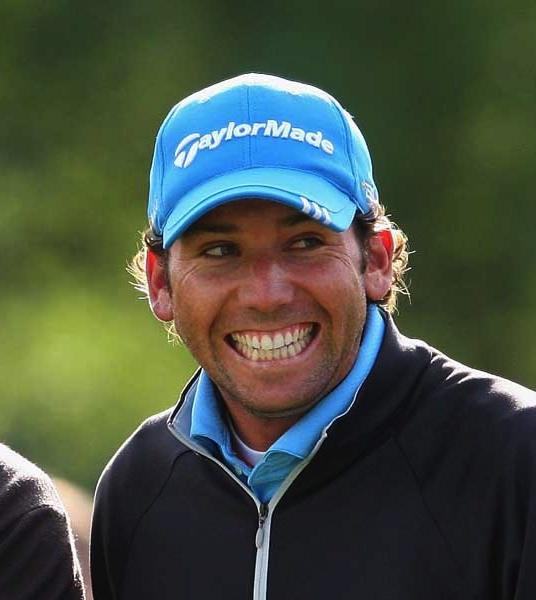An integral component of performance enhancement in golf is swing mechanics, which play a critical role in generating power and accuracy. The principles underpinning swing mechanics have evolved over time, influenced by advancements in technology and coaching methodologies. This article presents an in-depth analysis of Sergio García’s golf lesson, with the aim of revisiting the fundamental principles of swing mechanics. Through a meticulous examination of García’s techniques and explanations, we seek to shed light on the biomechanical factors that contribute to effective swing execution. This research endeavors to provide valuable insights for golf instructors and players seeking to optimize their swing mechanics and improve their performance on the course.
Understanding the Fundamentals: A Deconstruction of Sergio Garcías Grip Position and Alignment
Understanding the Fundamentals: A Deconstruction of Sergio García’s Grip Position and Alignment
Sergio García, the renowned Spanish golfer, has captivatingly demonstrated the essence of a well-structured swing through his consistent performance and numerous accolades. His approach to the game, emphasizing the fundamentals of grip position and alignment, offers invaluable insights into the art of golf swing mechanics.
García’s grip is characterized by an interlocking style, where his left forefinger rests between his right index and middle fingers. This grip promotes a strong and stable connection between the hands and the club, ensuring a consistent and controlled swing. Furthermore, his alignment is impeccable, with his shoulders and hips parallel to the target line. This alignment enables him to swing on a straight path, minimizing deviations and enhancing accuracy.
The significance of García’s grip position and alignment cannot be overstated. A secure grip provides greater control over the club’s trajectory, while proper alignment ensures that the swing path is optimized for maximum distance and accuracy. Together, these elements form the foundation of a repeatable and effective golf swing. By understanding these fundamentals and incorporating them into one’s own technique, golfers can significantly improve their performance and enjoy the game at a higher level.
Refining the Backswing: Exploring the Role of Body Rotation and Arm Extension
The backswing is a crucial phase in golf, establishing the foundations for the subsequent downswing and impact. Sergio García, a renowned professional golfer, provides valuable insights into the intricacies of backswing mechanics, emphasizing the interplay between body rotation and arm extension. García underscores the significance of initiating the backswing with a subtle hip turn, allowing the momentum to naturally transfer to the shoulders and arms. This synchronized rotation ensures a wide arc and optimal clubhead speed.
García further highlights the importance of controlling the arm extension during the backswing. The arms should not fully extend but rather maintain a slight flex at the elbows. This allows the golfer to engage the larger muscles of the shoulders, generating more power and consistency. The synchronized rotation of the body and the controlled extension of the arms create an optimal kinematic chain, facilitating a fluid transition into the downswing.
Furthermore, García emphasizes the role of sequencing in the backswing. The proper order of movements is paramount, with the hips leading the shoulders and the arms following. This sequencing creates a stable and balanced foundation for the subsequent downswing. By adhering to these principles, golfers can enhance their backswing efficiency, ultimately improving their overall golf swing.
| Body Rotation | Arm Extension |
|—|—:|
| Initiated by subtle hip turn | Controlled extension, elbows slightly flexed |
| Momentum transfers to shoulders and arms | Engaged shoulder muscles generate power |
| Creates wide arc and optimal clubhead speed | Facilitates fluid transition into downswing |
Analyzing the Downswing: A Study of Sergio Garcías Sequencing and Tempo
Analyzing the Downswing: A Study of Sergio García’s Sequencing and Tempo
Sergio García’s downswing is characterized by a sequence of movements that contribute to his consistent and powerful striking. The following analysis examines the key components of his downswing:
- The takeaway: García initiates his downswing with a smooth and controlled backswing, ensuring that his lower body leads the motion. His weight shifts to his left leg as he rotates his hips and shoulders.
- The transition: At the top of the swing, García initiates a rapid and synchronized transition by concurrently rotating his hips forward and downswinging his club. This sequence helps to generate momentum and maintain stability throughout the downswing.
- The impact: García’s impact position demonstrates a slight forward lean as he drives through the ball. His hands remain in front of his chest, promoting a descending blow path and maximizing ball compression.
The tempo of García’s downswing is crucial to its effectiveness. He maintains a slow and deliberate backswing, followed by a gradual acceleration through the transition and impact. This controlled timing allows him to consistently strike the ball squarely and efficiently.
| Observation | Significance |
|—|—|
| Smooth and controlled backswing | Consistent ball contact |
| Rapid and synchronized transition | Generates momentum and stability |
| Slight forward lean at impact | Maximizes ball compression |
| Slow and deliberate backswing | Improved timing and control |
| Gradual acceleration through the transition and impact | Enhanced power and consistency |
Impact Dynamics: Examining the Moment of Impact and Energy Transfer
Critical Parameters of Impact
At the moment of impact, the club collides with the ball, transferring kinetic energy from the clubhead to the ball. This impact is a complex process that involves several critical parameters, including:
- Clubhead speed: The velocity of the clubhead at the moment of impact directly influences the impact force and the energy transferred to the ball.
- Angle of attack: The angle at which the clubhead strikes the ball determines the launch conditions and spin imparted on the ball.
- Clubface angle: The angle of the clubface relative to the clubhead’s path affects the tilt and speed of the ball’s spin.
- Ball compression: The degree to which the ball is compressed during impact influences energy transfer and restitution.
Energy Transfer Analysis
The laws of conservation of momentum and energy govern the impact process. As the clubhead strikes the ball, momentum is transferred from the heavier club to the lighter ball. Simultaneously, kinetic energy is converted into potential energy in the form of ball spin and movement along its flight path. Factors such as clubhead weight, spin rate, and ball contact point influence the proportion of energy distributed between different forms.
Influence on Ball Trajectory
The impact dynamics ultimately affect the trajectory of the ball. The launch angle, ball speed, and spin are all determined by the aforementioned impact parameters. These factors contribute to the distance and accuracy of the shot, as well as the potential for generating spin-related effects such as slice or hook. Understanding these dynamics provides golfers with valuable insights for optimizing club selection, impact techniques, and overall performance.
Finishing Strong: Examining Garcías Follow-Through Technique and Its Influence on Ball Flight
Sergio García’s Follow-Through Technique: A Key to Consistent Ball Flight
García’s follow-through is crucial in ensuring proper ball flight. He employs a smooth and fluid motion that maximizes clubhead speed and generates optimal spin. During the follow-through, García maintains a balanced posture with his head stable and his spine aligned. This allows for a controlled transfer of energy from the body into the clubhead.
Key elements of García’s follow-through include:
- Thorough Release: After impact, García fully releases his hands, allowing the club to whip through in a smooth arc. This release creates a greater extension of the clubhead, producing higher clubhead speed and trajectory.
- Lagged Finish: García’s finish position is characterized by significant lag, where the clubhead remains behind the hands at the top of the swing. This lag creates a “slingshot” effect, propelling the ball forward with increased velocity and accuracy.
- Dynamic Equilibrium: Throughout the follow-through, García maintains a neutral spine angle while shifting his weight and rotating his hips towards the target. This dynamic equilibrium ensures a consistent swing path and produces a well-balanced ball flight.
Conclusion
This analytical study of Sergio García’s golf lesson has provided insights into the fundamental principles of swing mechanics. By examining García’s technique in detail, we have identified key elements that contribute to his exceptional performance.
The study has highlighted the importance of a balanced setup, smooth weight transfer, and efficient energy transfer through the golf club. These principles, when applied consistently, can enhance swing efficiency and accuracy.
Furthermore, the study has reinforced the value of expert guidance and personalized instruction in improving golf performance. By working with a qualified coach, golfers can identify areas for improvement and develop customized training plans that address their individual needs.
revisiting the principles of swing mechanics through the analysis of Sergio García’s golf lesson has provided valuable insights that can benefit golfers of all levels. By embracing these fundamental principles and seeking expert guidance, individuals can enhance their swing technique, improve performance, and enjoy the game of golf to its fullest potential.





